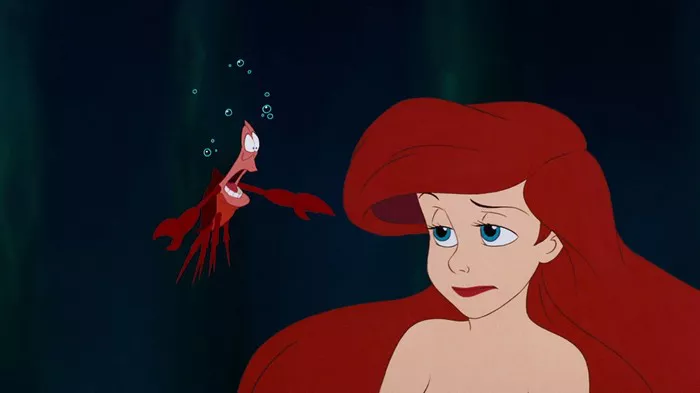In the enchanting world of fairy tales, few stories captivate hearts and minds like “The Little Mermaid.” A Disney classic that has endured for decades, this animated masterpiece tells the tale of Ariel, a mermaid princess who dreams of life on land and true love. However, beyond the familiar narrative lies a question that has intrigued audiences—How Does The Little Mermaid End? This exploration dives into the depths of the original Hans Christian Andersen fairy tale, examining its nuanced conclusion and shedding light on the divergent paths taken by Disney’s animated adaptation.
I. Disney’s The Little Mermaid: A Tale of Transformation and Love
1. Ariel’s Journey: The Disney Fairy Tale Fantasy
Disney’s “The Little Mermaid,” released in 1989, is a beloved animated film that has become a cultural touchstone. The story follows Ariel, a curious and adventurous mermaid who defies her father, King Triton, to pursue a life on land. The film culminates in a triumphant and romantic resolution as Ariel’s love for Prince Eric triumphs over the challenges posed by the sea witch Ursula.
2. The Animated Conclusion: A Happy Ever After
In Disney’s rendition, Ariel’s selflessness and courage lead to her transformation into a human, enabling her to be with Prince Eric. The climactic scenes of the film, set against the backdrop of Ursula’s defeat, celebrate love and the triumph of good over evil. The Little Mermaid and her prince share a passionate kiss, and the film concludes with the promise of a happily ever after.
II. Hans Christian Andersen’s Original Tale: A Darker Odyssey
1. Andersen’s Narrative: Sacrifice and Tragedy
The Little Mermaid’s journey takes a darker turn in Hans Christian Andersen’s original fairy tale, first published in 1837. In this rendition, the mermaid’s desire to become human is driven by more profound motives than love alone. She seeks an immortal soul, a concept foreign to mermaids, and willingly sacrifices her voice and enduring pain in exchange for the chance to gain an eternal soul and ascend to the afterlife.
2. Tragic Endings: A Bittersweet Conclusion
Andersen’s tale deviates significantly from the optimistic resolutions common in Disney adaptations. The mermaid’s sacrifices are met with heartbreak as her love for the prince remains unrequited. In a poignant twist, the Little Mermaid dissolves into sea foam, her selflessness rewarded with a chance at redemption in the spiritual realm.
III. Contrasting Endings: Themes of Sacrifice and Love
1. Love’s Triumph in Disney’s Adaptation
Disney’s version emphasizes the transformative power of love and the idea that selflessness and bravery can lead to a happy ending. Ariel’s journey from sea to land is portrayed as a testament to the enduring nature of love, with the film culminating in a joyous celebration of their union.
2. Andersen’s Exploration of Sacrifice
Andersen, on the other hand, weaves a narrative that explores sacrifice on a profound level. The Little Mermaid’s sacrifices, though noble, do not guarantee personal happiness or fulfillment. The original tale invites readers to contemplate themes of sacrifice, unrequited love, and the complexities of desires that transcend the superficial.
IV. The Evolution of Adaptations: From Page to Screen
1. Disney’s Trademark Optimus
Disney, known for its signature approach to storytelling, often infuses optimism and idealism into its adaptations of classic tales. The Little Mermaid’s transformation into a beloved Disney princess aligns with the studio’s commitment to delivering family-friendly narratives with uplifting resolutions.
2. Andersen’s Legacy: Resonance in Subtext
Hans Christian Andersen’s original fairy tales, including “The Little Mermaid,” are revered for their depth and allegorical richness. Andersen’s exploration of themes such as sacrifice and the pursuit of an immortal soul invites readers to reflect on the complexities of human desires and the consequences of transcending one’s nature.
Conclusion: The Enduring Allure of Two Tales
In conclusion, the question of How Does The Little Mermaid End? finds its answer in the divergent paths taken by Disney’s animated adaptation and Hans Christian Andersen’s original tale. Disney’s version, with its celebration of love and triumph, resonates with audiences seeking enchanting narratives with optimistic resolutions. Andersen’s narrative, with its exploration of sacrifice and bittersweet endings, offers a more nuanced and contemplative journey.
As audiences continue to be captivated by both renditions, the allure of “The Little Mermaid” endures. Whether in the joyous melodies of Disney’s animated musical or the haunting subtext of Andersen’s somber fairy tale, the essence of the story lies in its ability to evoke a myriad of emotions and provoke contemplation on the nature of sacrifice, love, and the pursuit of something beyond the surface. The tale of The Little Mermaid, in its various forms, continues to be a timeless exploration of the human condition—an enduring legacy that transcends generations and invites us to ponder the depths of our desires and aspirations.

